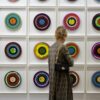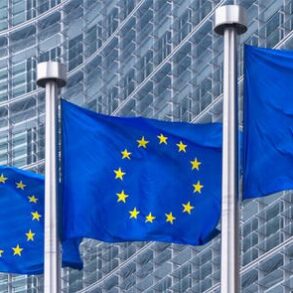Rewind a couple of years and South Korea was being heralded as the art world’s new mecca, with Seoul the natural capital. “It’s Boom Time for Seoul’s Flourishing Art Market. Here is Why the Art-Market Goldrush in South Korea is Here to Stay,” Artnet News announced in 2022. The following year, the Art Newspaper asked, “Seoul has all the ingredients for success—can Frieze now take its market to the next level?”
In a moment where the global economy is stuttering and all indicators point to a correction in the art market, the Asian fever pitch has lost a couple of decibels. On August 29, the Financial Times ran an article titled “Frieze Seoul returns as local art market seeks firmer foundations.”
In this case, firmer foundations are being forged by partnerships. For 2024, Frieze Seoul, which opens Wednesday, is collaborating with the country’s two major biennials, in Gwangju and Busan, which coincide this year with the fair, as well as South Korea’s ministry of culture, sports, and tourism (MCST), Seoul City Hall, and the Korea Foundation to ensure sustainability and longevity in numbers.
Patrick Lee, Frieze Seoul’s director, adopted a reassuring tone in an email he sent last month to exhibitors. “I understand the concerns from a market perspective,” he wrote, adding that Frieze’s VIP team has been restructured and the fair’s VIP hours extended—the fair opens at 11 am this year instead of later in the afternoon—to “maximize the opportunities for long-term and meaningful engagement” between galleries and wealthy collectors.
Sprüth Magers, which has gallery locations in Europe and the US and three offices in Asia, will once again return to the fair. Its head of Asia, Shi-ne Oh, told ARTnews that it’s “only natural” that Lee was “trying to calm us all down” given the state of the international art market. “This whole year has been very nerve-wracking because people were concerned due to people not spending, but it’s not specific to Korea—it’s been tough in America, China, Europe, everywhere,” she said.
If galleries are concerned, they also have reason to be positive. South Korea’s art market is worth over $750 million, according to the MCST—and high-net-worth individuals in the country have cash to burn. Morgan Stanley revealed the world’s biggest spenders on luxury goods in 2023 to be from South Korea; they forked out $16.8 billion on them, a 24 percent rise compared to 2022.
Let’s face it, as is de rigueur, many of the 116 galleries at Frieze Seoul this week have already pre-sold the works that will fill their booths. One major London gallery told me that all but one of its artworks destined for Asia are already sold (it’s planning to peddle the remaining painting to a local collector). What better way to alleviate any anxiety?

Frieze Seoul.
Lets Studio/Courtesy Frieze
However, dealer Thaddaeus Ropac, whose eponymous gallery has three locations in Europe and one in Seoul, told ARTnews that he is not worried by the market’s temperature. In fact, he said he thrives under the pressure, adding that his gallery has resisted pre-sales for the fair because he wants the works on offer, which have lower price points compared to what he brought to Art Basel in Switzerland this past June, to “stay in Asia.”
“This year is a continuation of the recent cooling we have seen in the art market, but I feel very comfortable in this situation,” he said. “Sometimes it’s good to have the feeling that there’s a bit of risk when you go all the way to Seoul. All of the effort, time, and money you put into it—the challenge pushes you to be better. You really have to think twice about what to send and to work harder to sell.”
Having operated in Seoul since 2021, Ropac described South Korea as “my favorite market within Asia” because selling in different parts of the region can be “complicated.” He continued, “It is complex to do business in Singapore, China has its obstacles, Hong Kong is easier, but in Seoul, we already have a great team there. We know the market better than a gallery who just comes for the fair.”
Pace Gallery CEO Marc Glimcher said his team, which has operated in Seoul since 2017, has “devoted a huge amount of time and effort to building relationships with local collectors” because it’s vital for success in South Korea, even factoring in that the country doesn’t have sales tax on art. He cautioned that that won’t necessarily lead to sell-out booths.
“There are a lot of situations of global psychological uncertainty which reflect positively in the art market, where uncertainty leads to people buying art,” Glimcher told ARTnews. “There are a few conditions where uncertainty leads to people not buying art, and we’re in one of those right now. This is macroeconomics and you’ve got to roll with it because you can’t control it. The microeconomics of this fair are the same as they’ve always been: the success of the endeavor, whatever it is, wherever it is, is dependent on the depth of your relationships.”
Like Glimcher, Jason Haam, who runs an eponymous gallery in Seoul and will participate in Frieze, said strong relations are imperative. He has some concerns about the global art market—rather than the fair itself—explaining that Korean buyers require “a little more attention,” not only due to cultural differences but because the country’s art market is nascent.
“People are unsure about what they should buy, there’s always a bit of caution when buying contemporary art,” he told ARTnews. “Korean collectors want to hear from the connoisseurs of the industry, which are the galleries. The same marketing strategy that is applied to American and European collectors doesn’t necessarily work in the same way in Seoul.”
For this edition, many participating galleries have gone to great lengths to exhibit Korean artists in their booths—a sharp break from the inaugural edition in 2021. And Korean artists, both historical and contemporary, have seen a surge in interest abroad. The Guggenheim Museum in New York debuted the traveling exhibition “Only the Young: Experimental Art in Korea, 1960s–1970s” last September, and the following month the Philadelphia Museum of Art opened “The Shape of Time: Korean Art after 1989.” This fall brings major commissions for Korean artists: Lee Bul for the Metropolitan Museum of Art’s facade commission and Mire Lee for Tate Modern’s Turbine Hall. Miyoung Lee, a vice president of the Whitney Museum in New York, said this indicates that the Korean art market is healthy.
“Despite any economic softness we might see, I am incredibly bullish on Korean and Korean diaspora artists—they are in worldwide demand,” she told ARTnews. “All the top galleries are clamoring to represent Korean artists it seems. Reversely, world-renown foreign artists are eager to show in Korea, speaking to the desire and demand of such exhibitions by the Korean collecting community. While economies can be cyclical, the underlying growth of the Korean art market broadly speaking seems to me at least as robust as ever.”






